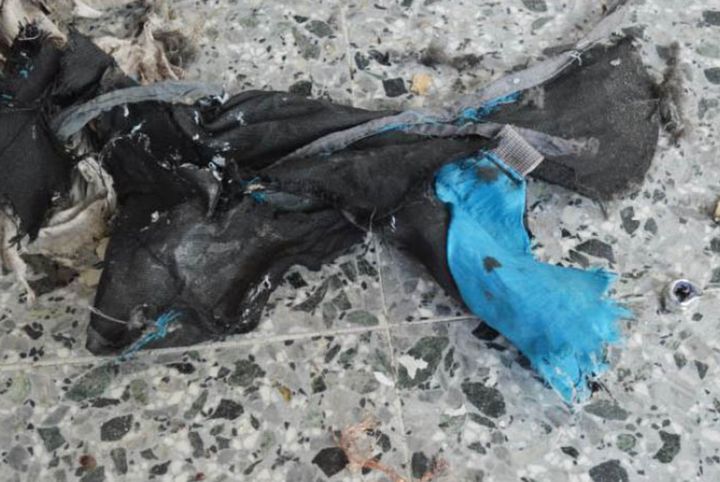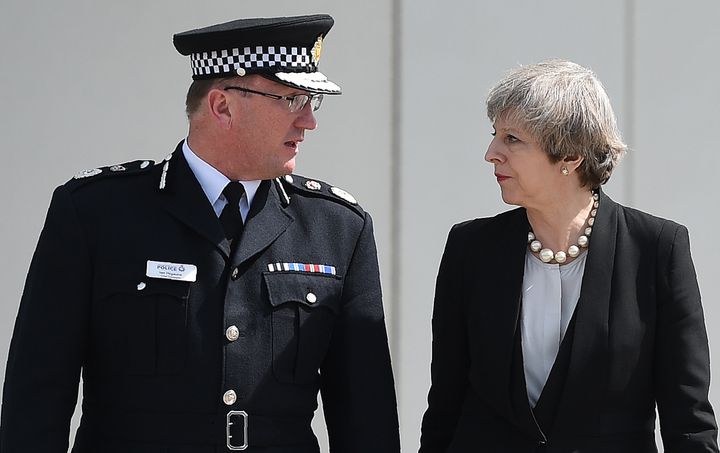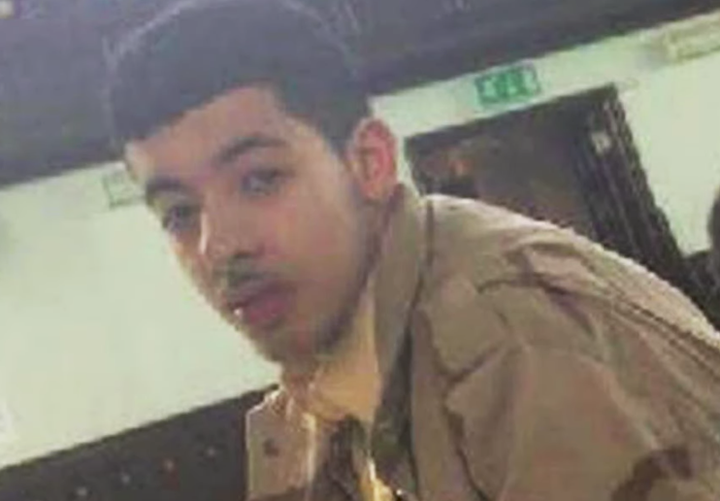The New York Times has defended its decision to publish crime scene photographs from the Manchester Arena bombing which police said were “distressing” to the victims families.
The newspaper on Thursday became the focus of a transatlantic controversy over shared intelligence after its report on the tragedy featured a cache of leaked images - including pictures of the remains of the bomb - and details about the methodology used by killer Salman Abedi to murder 22 people.
The Times on Thursday released a statement defending its coverage of the massacre, saying the images it used were neither “graphic nor disrespectful of victims”.
The New York Times statement in full, reads:
The images and information presented were neither graphic nor disrespectful of victims, and consistent with the common line of reporting on weapons used in horrific crimes, as The Times and other media outlets have done following terrorist acts around the world, from Boston to Paris to Baghdad, and many places in between.
Our mission is to cover news and inform our readers. We have strict guidelines on how and in what ways we cover sensitive stories. Our coverage of Monday’s horrific attack has been both comprehensive and responsible.
We cover stories about terrorism from all angles. Not only stories about victims but also how terrorist groups work, their sources of funding, how they recruit. Acts of terrorism have tremendous impact on how we live, on how we are governed and how we interact as people, communities and nations. At times the process of reporting this coverage comes at personal risk to our reporters. We do it because it is core to our mission.
Speaking at a press conference on Thursday, Greater Manchester Police’s (GMP) Chief Constable, Ian Hopkins, said police were compelled to forewarn victims families of the NYT story.
“It is absolutely understandable that this has caused much distress for families that are already suffering terribly with their loss,” he said, while also revealing that eight people had been arrested in the hunt to dismantle the “terror network” and that police had uncovered items, “very important to the investigation”. Hopkins would not detail what they were.
The Times’ statement came after Prime Minister Theresa May said she would confront Donald Trump over the leaks at a meeting in Brussels on Thursday and reports that GMP had decided to temporarily stop sharing information with the US.
“I will make clear to President Trump that intelligence that is shared between our law enforcement agencies must remain secure,” May said.
Trump has since said the leaks were “deeply troubling” and vowed “to get to the bottom of this”.
“The alleged leaks coming out of government agencies are deeply troubling,” the US President told leaders at Nato headquarters on Thursday.
“These leaks have been going on for a long time and my administration will get
to the bottom of this. The leaks of sensitive information pose a grave threat to our national security.
“There is no relationship we cherish more than the Special Relationship
between the United States and the United Kingdom.”
The intelligence-sharing controversy was sparked by CBS and NBC being leaked Abedi’s name less than 24 hours after the bombing. At that time police had only just arrested his older brother, Ismail, near a Morrisons in Chorlton, and were undertaking a series of raids at properties linked to his family, in Whalley Range and Fallowfield. The raids have been ongoing ever since.
The Guardian on Wednesday quoted UK counter-terrorism specialists as saying they needed to keep secret the name of any perpetrator or suspect for at least 36 hours to ensure there was an element of surprise in approaching relatives, friends and others.

The leak prompted Home Secretary Amber Rudd to call US secretary of homeland security, John Kelly, asking him for the leaks to stop. Then, on Wednesday, she told the media the leaks were “irritating” and told reporters the British police had been “very clear that they want to control the flow of information in order to protect operational integrity”.
The New York Times then ran its story, supercharging the debate around intelligence sharing, which prompted former Deputy Prime Minister John Prescott to suggest that it is time to review all of the UK’s intelligence sharing with the US.
Lord Prescott told BBC’s Daily Politics: “It’s so horrific given the circumstances. There has got to be a complete review.
“It’s opened the argument about what is the value of sharing the intelligence? The question now is whether you can trust the Americans to share intelligence.
“It’s dramatic, it’s a game-changer.”
Prescott added that May wanted to expand intelligence sharing but the leaks had called into question whether even the current set-up was appropriate.
A Whitehall source described the second US leak as “on another level” to the BBC, and said it had caused “disbelief and astonishment” across the British government. The broadcaster said UK Officials believe that US law enforcement rather than the White House is behind the leaks.

Speaking on the Today Programme on Thursday, BBC Security Correspondent Frank Gardner said the leaks were “outrageous in two ways”.
He explained: “First of all it is utterly disrespectful to the victims and their families. These are pictures that probably would never even be shown to the families of the victims. They’re still in the early stages of grieving and this kind of forensic detail is something that should be held by only a few few people.”
The second issue, he told the programme, was that the pictures published by the Times, and subsequently media outlets around the world, would also tip off anyone associated with the attack that police already had a lot of evidence.
“What it does, it tell us that there is enough surviving fragments and surviving residue that they will have a very clear picture of how this was put together. The methodology.”
Gardner said the leaking of bomber Abedi’s name was also “frustrating for the police because they needed to not only knock on doors but blow them down and go in and capture people and take them into custody”.
“Once the name is out there we have alerted certain people who might well have tried to flee the country or go into hiding, so that is why it is really bad, this leak,” he said.

Former Metropolitan Police Commissioner Sir Ian Blair called the leaking of information a “grievous breach”, but said the same thing had occurred after the July 7, 2005 London terror attack that claimed 52 lives.
Lord Blair told the Today Programme: “It reminds me exactly of what happened after 7/7 when the United States published a complete picture of the way the bomb in 7/7 had been made up.”
He added that it was a “different world in which the US operate, in the sense of how they publish things”.
Lord Blair said he completely agreed with Gardner that the leaks was “a very serious grievous breach”, but added: “I’m afraid, it is the same as before.”
He urged the focus to remain on the victims families as “their lives are the ones being transformed.. but we’ve been discussing this John (Today Programme host John Humphrys) since 2005 and the dilemmas are the same.”

The National Police Chiefs’ Council told The Telegraph that the leaking of crime scene photos “undermines our investigations and the confidence of victims, witnesses and their families”, but declined to detail what impact leaks have on active criminal investigations to HuffPost UK.
In a blog for HuffPost UK, international relations and politics specialist, Michael Day, wrote that the leaking of such critical information during an undergoing investigation, affecting so many people, was, “heartless beyond belief”.
“To share pictures of the nuts and screws used to kill and maim concert goers, a point rammed home by the fact that in the photos so unhelpfully supplied by the New York Times are surrounded by the blood of those victims,” he wrote.
“It would significantly irresponsible to share them after an investigation has finished but to do so when the suspects are still on the run defies all common sense and decency. It does so to the point that this simply can’t be incompetence but one wonders if there is malice and cynicism involved.”
